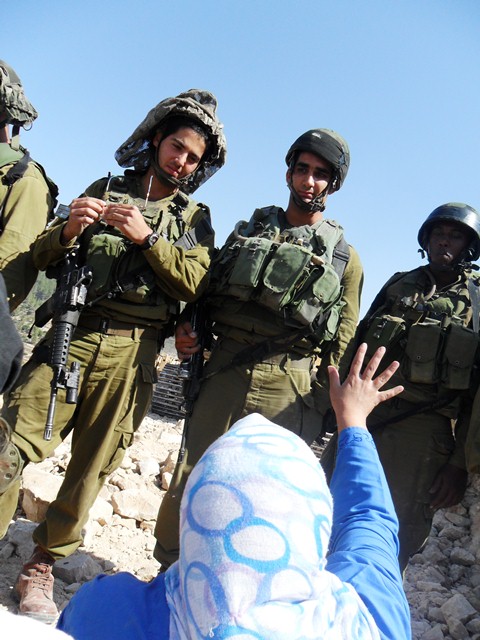Tag: Demonstration
-
Israeli soldiers violently suppress demo; sweep through houses to carry out arbitrary arrests in Nabi Saleh
29 July 2011 | Popular Struggle Coordination Committee Military checkpoints were set up early in the morning on all roads leading in and out of Nabi Saleh this Friday, as the Israeli army does every Friday in its attempt to prevent people from outside the tiny village to support the villagers in their struggle for…
-
Military resorts to violence in Al Walajah peaceful demonstration
27 July 2011 | International Solidarity Movement, West Bank A peaceful protest against the construction of the apartheid wall in the village of Al Walajah was brought to a violent end by the Israeli army this morning with five arrests. At 09:00 AM a group of Palestinians, Israelis and international activists walked through the village’s…
-
Ni’lin demonstrator hit with shrapnel during weekly protest
23 July 2011 | Ni’lin Village Today in Ni’lin, one demonstrator was hit with shrapnel and dozens suffered from tear gas inhalation during the suppression by the Israeli occupation forces of the anti-wall weekly protest. The march organized by The Ni’lin Popular Committee was supported by many Palestinians, International’s and Israeli peace activists. Upon arrival…

